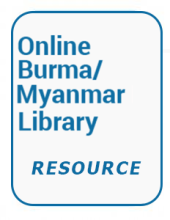Land Library
Welcome to the Land Portal Library. Explore our vast collection of open-access resources (over 74,000) including reports, journal articles, research papers, peer-reviewed publications, legal documents, videos and much more.
/ library resources
Showing items 19 through 27 of 1216.This article explores some of the realities of supporting income generation for displaced people in conflict settings, drawing on experiences in Kachin, northern Myanmar, suggesting development and humanitarian actors need to better acknowledge limitations and rethink our approaches.
Racialised land ownership in former apartheid-governed states of the SADC remains the most divisive subject particularly between Western states and SADC states themselves.
Recently, in its policy conference held in Johannesburg, South Africa from 30 June to 5 July 2017, the African National Congress (ANC) once again put on the table the possibility of land expropriation without compensation.
This paper revises current understandings of the rôle of land in the economy of the Italian diaspora in the Greek East in the second and first centuries b.c., arguing that these Italians owned more land than has previously been assumed and that many of these Italian landowners practised a hi
African universities have a key role to play in developing technical and human capacities to support land policy development and implementation, according to experts attending a two-day meeting to validate a study on ‘Land, Ethnicity and Conflict in Africa’, held last month in Addis Ababa, Ethiop
The Financial and Fiscal Commission (the Commission) undertook a study into the land reform programme. Part of the problem is that land reform is framed within the narrow confines of agriculture and does not take into account the inherent sectoral challenges.
XVI Biennial Conference of the IASC, Utrecht July 2017
Track 8: What Role can the Commons play in the Struggle for Land Rights, in particular of
In 2004, Ngwe Yi Pale Company began coal mining in Nam Ma tract of Hsipaw township. The mining has destroyed farmlands and irrigation sources, and caused water and air pollution, mi-pacing over 3,000 people.
Since 2012, land governance in Myanmar has been undergoing major changes. This article aims to capture the changes of the last year, framed through my perception of working as a consultant for a range of local NGOs, INGOs and donors.






